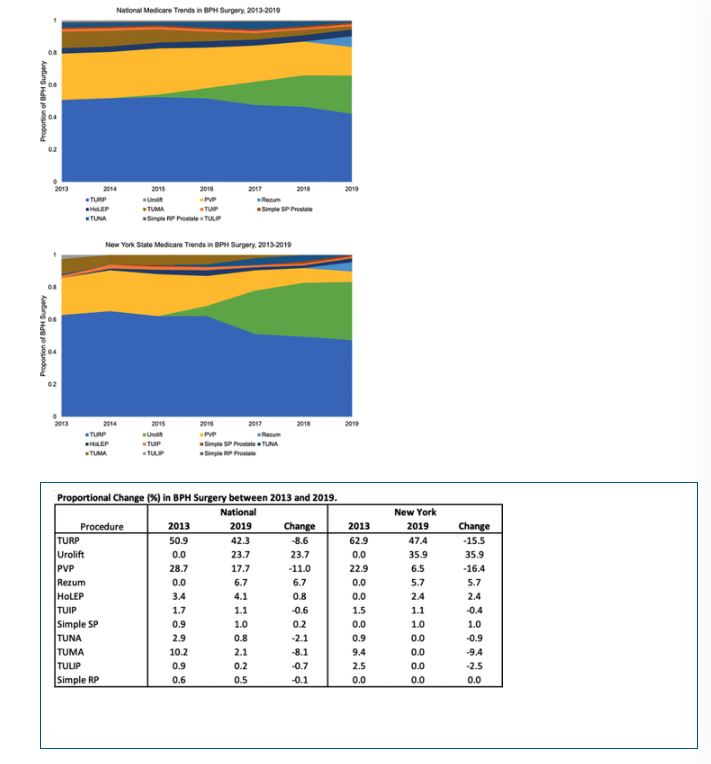Introduction and objective
The prevalence of benign prostatic hyperplasia (BPH), coupled with its significant impact on quality of life has spurred a new and exciting era in surgical treatment modalities. In this study, we sought to characterize contemporary national and regional trends in BPH surgery.
Methods
We utilized the Medicare Part B National Summary Data File to obtain the total number of billed BPH procedures at the state and national level between 2013 and 2019. CPT codes were used to identify the different types of BPH surgery. Descriptive statistics and Chi-square analyses were used to characterize trends and assess regional and national differences in BPH surgery. Statistical significance was defined as p <0.05.
Results
A total of 703,919 BPH procedures were billed to Medicare during this time period. TURP was the most commonly performed procedure, accounting for 50.8% of all BPH surgery in 2013 and 42.2% in 2019. In contrast, TULIP was the least commonly performed procedure (n=3,531). Urolift was rapidly adopted, accounting for only 1.5% of total BPH surgeries in 2015 and, eventually, 23.7% in 2019. Conversely, national PVP rates decreased the most during this time. Similar trends were found at the single state level (New York). TURP accounted for 62.9% of BPH surgery in 2013 and 47.4% in 2019. A comparable increase in Urolift surgery was seen, 6.3% to 35.9%. Although trends were similar, there were statistically significant differences in the proportion of PVP, Urolift, HoLEP, simple suprapubic prostatectomy, TUMA, and TUNA procedures performed at the state and national level. Such differences were not seen with TURP and TUIP.
Conclusions
Although TURP remains the most commonly utilized BPH procedure, other less invasive options are rapidly accounting for a higher proportion of BPH surgery.
